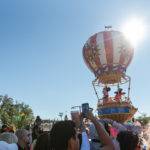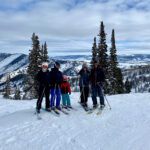As we’re getting ready to travel for my children’s Spring Break next week, I realized how easy traveling with them has become over the years. Both of my kids experienced their first flights when they were each less than 6 months old, flying eight hours to Germany to see my parents and relatives. I’ve been taking my kids to Germany every year since they were babies, many times by myself, so they learned to pull their own suitcases when they were quite little.
I know traveling with young children, babies and toddlers can seem overwhelming so here are a few things that I’ve learned and some things that have helped me along the way. And to top it off, I’m including some amazing iPhone shots of some of our flying adventures.
Ask for Help
Most people are eager to help young parents without being asked, especially when they’re traveling solo. Flight attendants don’t mind heating up water for bottles or bringing extra blankets or airline treats or toys. Kind strangers have helped juggle suitcases for me, watched my toddler while I dealt with the baby, even scrounged up wet wipes for me when both children vomited all over themselves at the same time after a bumpy landing.
I do have one favorite story when I was seated with my youngest (7 months old at the time) next to a middle-aged man, away from my husband and toddler. He took one look at me and my baby and told me that his flight just got a whole lot worse, because we were seated next to him. Even though my blood was boiling, I stayed very sweet and gloated on the inside when the flight attendant commented on my “angel baby,” who smiled the entire flight and entertained himself for 1.5 hours with the safety brochure, flight magazine and an empty paper cup.
Channel Your Inner Patience
Traveling with a baby just learning to move (crawl or walk) requires so much patience. And so many distractions. They don’t want to sit still anywhere, especially for hours on a small plane. When we were in these phases, I brought stickers, lots of snacks and treats, coloring books, favorite or new toys and books. And don’t underestimate the happiness that airplane cups and magazines can bring to a toddler. Their attention span is so short that they’ll quickly move from one activity to the next within minutes. We walked around the plane when we could, played with the seat back pocket contents many times. I preferred the bulkhead seats with the extra leg room with a crawler or early walker so that they could stretch their little legs often.
Sleep When You Can
Sleeping on planes is miserable at best, even for babies and toddlers. Having a baby carrier on planes and in airports was crucial for nap time with both of my kids. On international flights, some airlines (Lufthansa is my favorite) offer bassinets that attach to the bulkhead. These allowed our baby to lay down and sleep and gave them a place to sit and play once they’ve tackled that skill. (Although one airline brought me a duffel bag when I requested the baby bassinet… Obviously, that never worked out for anyone.) As the kids got older, we avoid the bulkhead seats on long flights since the armrests don’t lift up. Another tip: On overnight flights, we liked to change our babies and toddlers into PJs to help them transition to sleep in a weird setting.
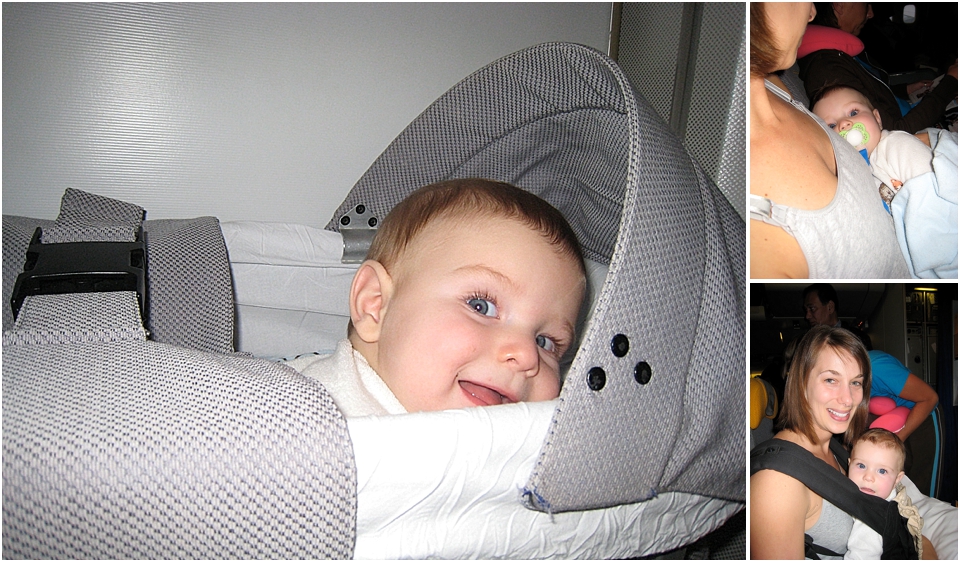
Relax and Watch TV
Our children are allowed to watch very little TV at home (usually 1 movie on weekends), but all bets are off on flights. Those daytime flights back from Europe are especially long and boring so if my kids want to watch eight hours of TV in one stretch, so be it. We usually bring an iPad or laptop loaded with some of their favorite movies in case our seats don’t have individual TVs. We also bring kid-friendly headphones – don’t forget a splitter so that they can watch a show together.
I remember one long flight home without my husband, our seats didn’t have TVs, and I’d forgotten any sort of electronics for the flight… Honestly, I have NO idea how we passed the time, yet, somehow, we survived without any drama.
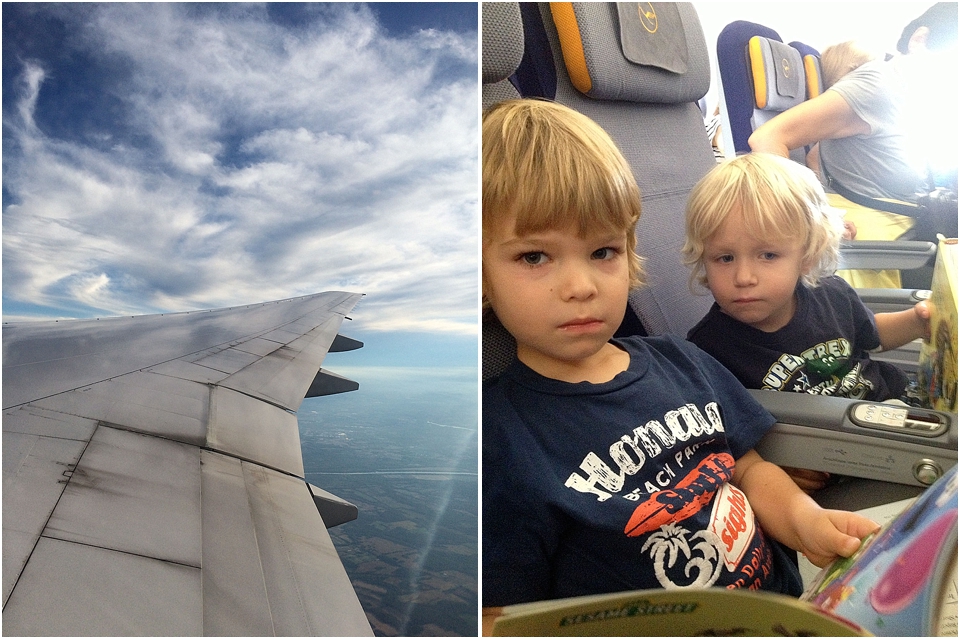
Eat, Drink and Be Merry
Let’s be real: Airplane food can be pretty sad. I don’t always remember to do this, especially now that the kids are 7 and 5, but I often like to order one kid’s meal when booking. Kids’ meals are served before the main service, which is helpful with hungry little ones. I split up the meal for them, and then I order one each of the main cabin meals so that we have variety of different things to try and share. I always make sure to bring additional snacks and water bottles, both especially helpful for those Customs lines after getting off that long flight.
(Don’t) Be a Packrat
A few things that I haven’t mentioned yet but found helpful to have on board with us when the children were babies and toddlers: Change of clothes for everyone, including underwear for the little ones; extra diapers; 2-3 pacifiers; wipes; baby carrier; favorite lovey; disinfectant wipes for the tray tables and arm rests. Our umbrella stroller was helpful for some time in wheeling our carry-on bags around the airport – and also when my oldest could push his little brother through the Frankfurt Airport so that I could tend to our luggage cart. We never bothered carrying on car seats (they get checked at no cost). We also didn’t buy that seatbelt harness, especially since babies are buckled into the adult seatbelt on international flights.
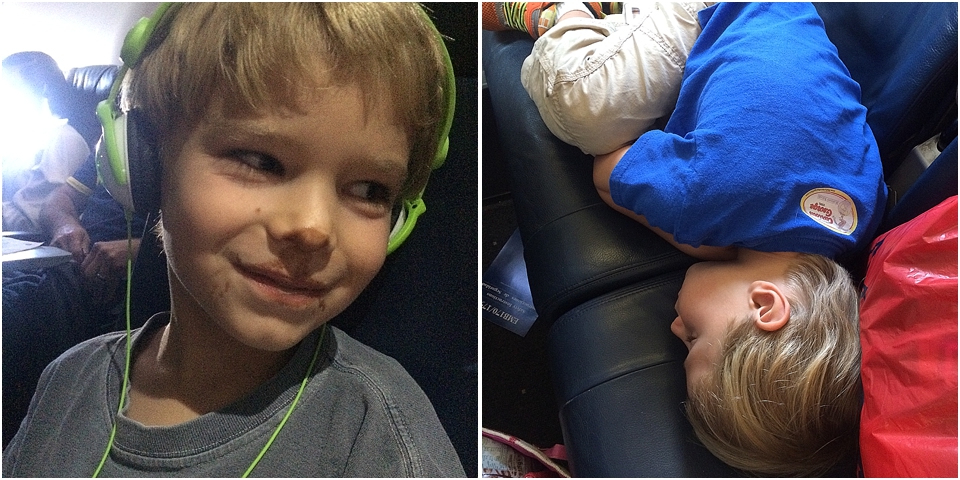
Traveling with young children can be stressful and there are bound to be times that your baby (or you) is in tears. Try to remember that many people on your flight have been there. Just do your best to help your little one get comfortable again. The more you stress over disturbing your fellow passengers, the more your baby will sense your anxiety. And, thankfully, the engine noise will help drown out yours and your baby’s crying.
Adjust Your Routine
One last tip…. Jet lag…. When flying to Europe, everyone loses several hours of sleep and is exhausted upon arriving early in the morning. To help us transition to the new time zone relatively quickly, I always stuck to my children’s nap routines, whatever they were at that age. When they were babies, we drove to my parents’ or grandparents’ house for a late-ish breakfast and then took our first nap of the day. The trick is to sticking to your routine, which means waking them up after their normal nap length. I would then put them down for their second nap of the day a few hours later. These days, no one naps normally, but we all take a 2-hour nap during the day to re-energize. Our morning and evening routines are usually shifted to slightly later hours when we’re in Europe, because of the nap shuffle, but I actually don’t mind putting the kids to bed later since it allows us more time for dinner with relatives. After 1-2 nights of waking up at random hours of the night, we’re back to sleeping soundly at night. The first couple of days are exhausting so I try not to overschedule us. Flying home from Europe, in comparison, is a breeze, because you arrive exhausted after traveling all day and can happily fall into bed at the normal bed time.


